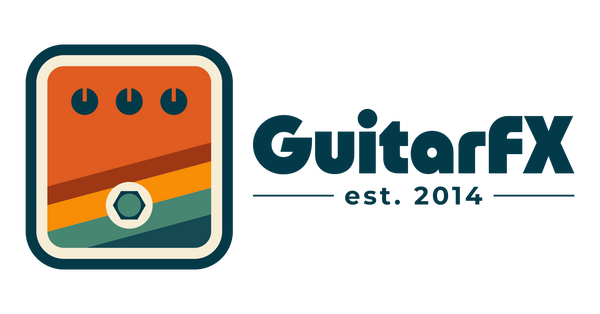What is a Booster effect?
Share
Booster Guitar Pedals
Introduction
Welcome to the world of booster pedals, a realm where subtlety and power coexist. These pedals are pivotal in shaping the guitar's voice, often providing the final touch that defines a musician's signature sound. This comprehensive guide delves into the intricacies of booster pedals, from their historical evolution to practical applications.
The Evolution of Booster Pedals: A Historical Perspective
The journey of booster pedals began in the era of early rock 'n' roll. Initially created to overcome the limitations of guitar amplifiers and pickups, these pedals were basic, often homemade, devices designed to amplify the guitar signal. Over time, as music evolved and technology advanced, booster pedals transformed. They became more sophisticated, offering not just volume boost but also tonal enhancement. Today, they are an essential part of any guitarist's toolkit, revered for their ability to add depth, warmth, and clarity to the guitar's sound.
The Sound of Boost: Unpacking What Booster Pedals Achieve
Booster pedals are more than mere volume enhancers. They have the unique ability to shape the tone of a guitar. When used with tube amplifiers, booster pedals can drive the tubes into a sweet, harmonious overdrive, creating a rich, full sound that's ideal for genres like blues and rock. With solid-state amplifiers, they add clarity and punch, bringing a crisp definition to the guitar's tone. For electric guitars, a booster can emphasize the natural characteristics of the pickups, whether they're the bright, twangy sound of single-coils or the warm, thick tones of humbuckers.
Key Features and Variations in Booster Pedals
Booster pedals come in various forms, each offering unique characteristics:
- Clean Boosters: These pedals amplify the signal without altering the guitar's inherent tone. They're ideal for solos or for cutting through a dense mix.
- Treble Boosters: Popular in classic rock, these pedals emphasize the high frequencies, adding brightness and bite to the sound.
- Bass Boosters: Designed to enhance the lower frequencies, these pedals add depth and richness to the tone, particularly useful for bass guitars or to add fullness to thin-sounding guitars.
- EQ Boosters: Combining boosting capabilities with equalization, these pedals allow for precise tonal shaping, accommodating a wide range of sonic preferences.
Mastering Your Signal Chain: Integrating Booster Pedals
The position of a booster pedal in your signal chain can significantly influence its effect. Placed before distortion or overdrive pedals, a booster pedal can increase the intensity of the distortion, resulting in a more aggressive sound. When positioned after these effects, it raises the volume without affecting the distortion's character. The key is to experiment with placement to find the sound that best suits your style.
Interplay with Different Types of Amplifiers and Guitars
Booster pedals interact differently with various types of amplifiers and guitars:
- Tube Amplifiers: They respond beautifully to booster pedals, enhancing the natural overdriven tones of the tubes. The interaction creates a warm, organic sound that's highly sought after.
- Solid-State Amplifiers: While the effect is less pronounced, booster pedals can still significantly improve the clarity and presence of a solid-state amp's sound.
- Electric Guitars: The type of pickups in your guitar will affect how it responds to a booster pedal. Single-coil pickups, known for their bright and clear sound, can benefit from the added warmth and depth of a booster. In contrast, humbucker pickups can achieve a richer, more saturated tone.
Icons of the Booster Pedal: Notable Users and Their Gear
This section highlights legendary guitarists who have used booster pedals to shape their iconic sounds. For instance, Eric Clapton's use of the Dallas Rangemaster treble booster helped define his signature 'Cream' sound. Similarly, Brian May's use of a custom-built treble booster in conjunction with his Vox AC30 amp contributed significantly to his distinct tone.
Crafting Your Tone: Advanced Tips and Techniques
Advanced techniques in using booster pedals can take your playing to the next level. Stacking booster pedals, using them in conjunction with other effects like delays and reverbs, and manipulating the pedals' settings in real-time during a performance are some of the ways to explore their full potential.
Selecting the Right Booster Pedal for You
Choosing the right booster pedal involves considering several factors, such as the type of music you play, the gear you use, and the specific tonal qualities you're looking to enhance. It's also important to consider the pedal's build quality, reliability, and ease of use.
Conclusion
Booster pedals are a testament to the philosophy that sometimes less is more. By understanding and utilizing these pedals, guitarists can significantly enhance their sound, adding depth, clarity, and definition to their playing.
